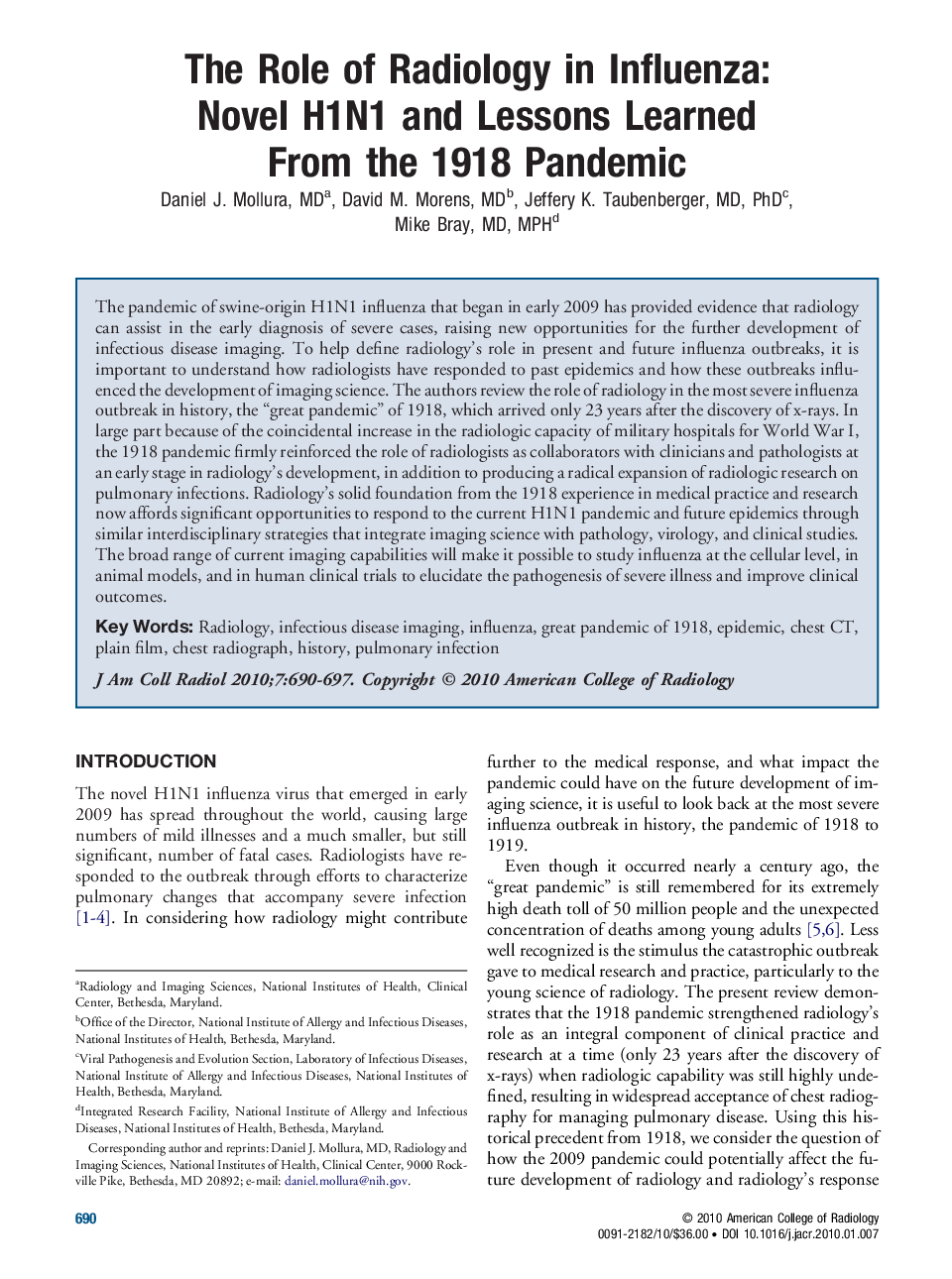| Article ID | Journal | Published Year | Pages | File Type |
|---|---|---|---|---|
| 4232169 | Journal of the American College of Radiology | 2010 | 8 Pages |
Abstract
The pandemic of swine-origin H1N1 influenza that began in early 2009 has provided evidence that radiology can assist in the early diagnosis of severe cases, raising new opportunities for the further development of infectious disease imaging. To help define radiology's role in present and future influenza outbreaks, it is important to understand how radiologists have responded to past epidemics and how these outbreaks influenced the development of imaging science. The authors review the role of radiology in the most severe influenza outbreak in history, the “great pandemic” of 1918, which arrived only 23 years after the discovery of x-rays. In large part because of the coincidental increase in the radiologic capacity of military hospitals for World War I, the 1918 pandemic firmly reinforced the role of radiologists as collaborators with clinicians and pathologists at an early stage in radiology's development, in addition to producing a radical expansion of radiologic research on pulmonary infections. Radiology's solid foundation from the 1918 experience in medical practice and research now affords significant opportunities to respond to the current H1N1 pandemic and future epidemics through similar interdisciplinary strategies that integrate imaging science with pathology, virology, and clinical studies. The broad range of current imaging capabilities will make it possible to study influenza at the cellular level, in animal models, and in human clinical trials to elucidate the pathogenesis of severe illness and improve clinical outcomes.
Related Topics
Health Sciences
Medicine and Dentistry
Radiology and Imaging
Authors
Daniel J. MD, David M. MD, Jeffery K. MD, PhD, Mike MD, MPH,
